The United States has 169 volcanoes that are considered active by scientists. The locations of these volcanoes are somewhat concentrated, and there are a number of national parks with volcanoes in these regions. The majority of these volcanoes are in Alaska (see the map below) where a volcano eruption happens almost every year, and California.
There are also a few in Hawaii with one that’s been actively erupting since the 1980s, but the rest are located along the pacific coast on what is referred to as “the ring of fire“.
The ring of fire is about a 25,000-mile stretch along the pacific coast where there is a lot of volcanic and earthquake activity. 75% of the earth’s over 450 total volcanoes are located in this ring of fire. As you can see from the image above, the ring of fire stretches throughout several continents and countries. Additionally, 90% of the earth’s seismic activity occurs along this path.
Which U.S. national parks have volcanoes?
There are 59 national parks and 117 national monuments in the U.S., with 78 of the national monuments managed by the National Park Service. Several of these have volcanoes where the volcano itself is the national monument, such as Mount St. Helen’s National Volcanic Monument.
Here are 10 national parks that have volcanoes:
1. Lake Clark National Park and Preserve – Alaska
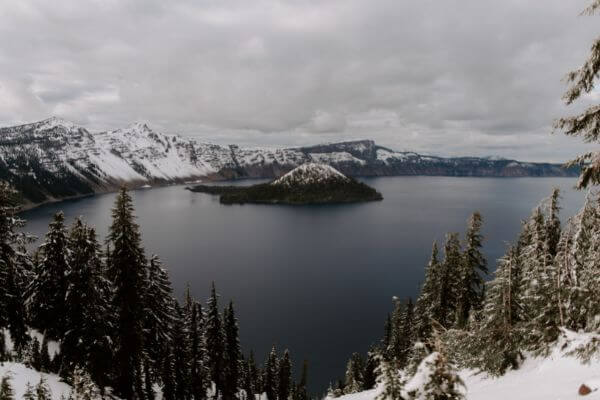
Lake Clark National Park and reserve is home to two volcanoes, Redoubt and Iliamna. These two stratovolcanoes are part of the Chigmit and Neacola Mountains in Alaska. They are both in the ring of fire that we touched on above.
Iliamna hasn’t erupted in recorded history, but Redoubt has erupted at least 30 times in the last 10,000 years according to the National Park Service.
2. Katmai National Park and Preserve – Alaska
Katmai is home to some of the world’s most active volcanoes and has at least 14 within the park. Of these 14, a few have been active in the last 100 years or so, these are Novarupta-Katmai (1912), Mount Trident (1953-1974), and Fourpeaked Volcano (2006), according to nps.gov.
3. Wrangell-St. Elias National Park and Preserve – Alaska

Here you’ll find one of the largest active volcanoes in the world, Mount Wrangell, which last erupted in 1900. At 14,163 feet, Mount Wrangell is also the only active volcano in the Wrangell Mountains. The Wrangell volcanoes formed over about 5 million years and the volcanic field covers about 2000 miles. Mount Wrangell has a caldera at its peak that still occasionally vents steam from the heat within, even though scientists say that it is very unlikely to erupt anytime soon.
4. Volcanoes National Park – Hawaii
This national park on the Big Island of Hawaii is home to two of the most active volcanoes in the world, Kīlauea, and Mauna Loa. Kilauea is a shield volcano with a caldera on its summit that has been erupting off and on since 1983 in its current volcanic cycle. Last year, in May of 2018, there was a large eruption after an earthquake hit the island. Mauna Loa last erupted in 1984.
Check out this article to learn 23 interesting facts about Hawaii Volcanoes National Park.
5. Haleakala National Park – Hawaii
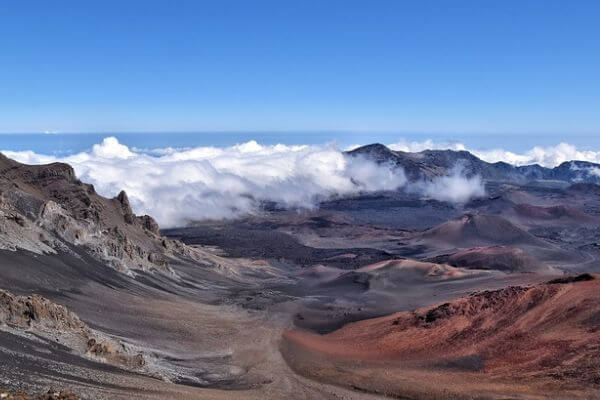
Haleakala is a shield volcano on Maui. It has one of the earth’s largest dormant volcanic craters which is about 20 miles in circumference. Haleakala hasn’t erupted since 1790 and is considered dormant. The name Haleakala means “house of the sun” in Hawaiian.
6. Mount Ranier National Park – Washington
Established in 1899, Mount Ranier National Park is home to one of the nation’s largest and most dangerous active volcanoes even though it’s currently “at rest”. At 14, 410 feet high Mount Ranier is also the 5th tallest mountain in the lower 48 states.
7. Crater Lake National Park – Oregon
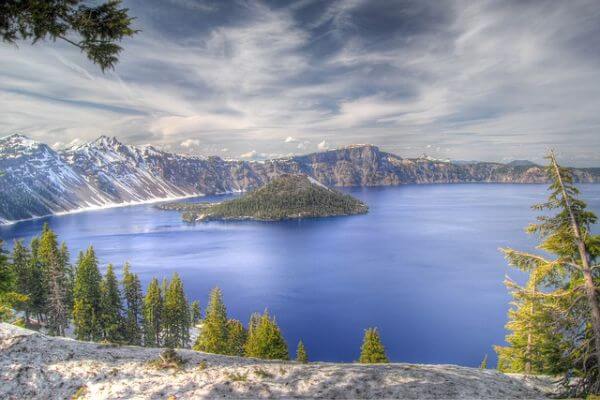
Atop Mount Mazama in this national park sits a stratovolcano that collapsed almost 7,000 years ago to form Crater Lake, which is now a 6-mile-wide caldera.
8. Yellowstone National Park – Wyoming
The volcano in Yellowstone is commonly referred to as the Yellowstone supervolcano or the Yellowstone caldera. In fact, most people don’t even realize that the majority of the park itself actually IS the volcano. Even though the supervolcano hasn’t erupted in thousands of years it is still considered an active volcano. You can visit the caldera in the northwest corner of Wyoming, just north of Shoshone Lake south of Hwy 191.
9. Death Valley National Park – California
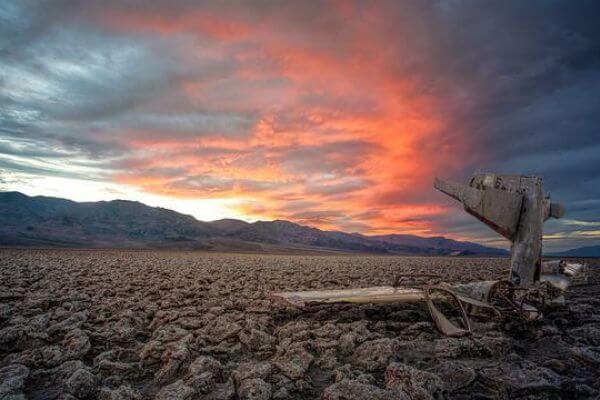
Ubehebe Crater is a 600 ft deep volcanic crater in Death Valley National Park. There is a volcanic field in the park with several of these Maar-type volcanoes that were created by steam and gas explosions, Ubehebe was formed as recently as 300 years ago. According to some scientists, because the volcano is so young, it has to be considered “potentially active”.
10. Lassen Volcanic National Park – California
Lassen Volcanic Center, which is the entire volcanic area in the park, is one of 3 high threat volcanic areas in the state of California. The park is home to an underground hydrothermal system or system of hot water powered by volcanic heat, as well as several volcanoes including Lassen Peak which last erupted about 100 years ago. Scientists monitor the volcano closely from the California Volcano Observatory because it is considered a high threat.
Different types of volcanoes
Cinder Cone
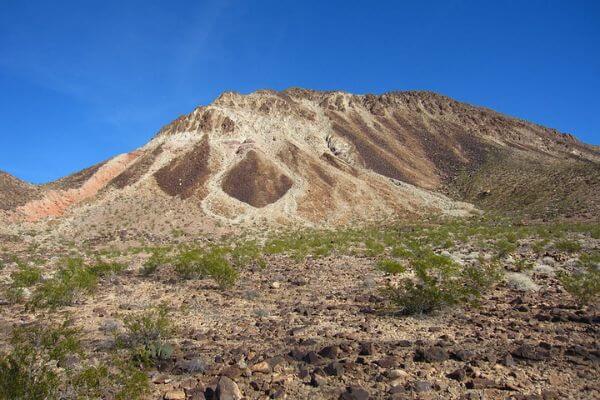
Cinder cone volcanoes can commonly be found on the flanks of shield volcanoes, stratovolcanoes, and calderas. Scientists have discovered nearly 100 of these volcanoes on the flanks of Mauna Kea (a shield volcano) in Hawaii. Heavy lava flows are the main threat cinder cone volcanoes pose.
Shield
Both Kilauea and Mauna Kea in Hawaii have also shielded volcanoes. Shield volcanoes have gently sloping sides and are known for their low viscosity, and easy-flowing lava when they erupt.
Composite or Stratovolcanoes
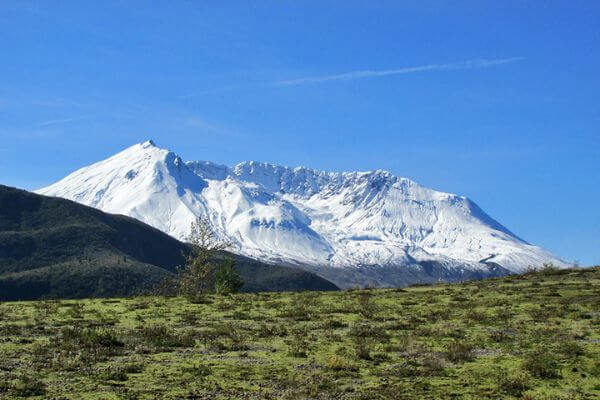
These are considered the most violent volcanoes. They are known for being steep volcanoes and having violent eruptions, Mt. St. Helens is a stratovolcano.
Lava Dome
A lava dome forms from a slow, overflowing eruption causing lava to pile up around a volcano’s vent. They often form within the craters of stratovolcanoes.
Caldera
When a volcano’s magma chamber is emptied and collapses a bowl-shaped crater is left behind, this is called a caldera.
—
There are a few other types of volcanic formations such as volcanic plugs, tuff cones, and lava plateaus.
Most recent volcanic eruptions in the U.S.
As most of us know that watch the news, Mt. Kilauea of Hawaii’s Volcano National Park, erupted in 2018 leaving a wake of destruction in its path. Homes were destroyed, the land was reformed, and luckily there was no loss of life.
Below are some of the more recent volcanic eruptions in the United States:
- Mount Kilauea in Hawaii – 1983, 1990, and then most recently in 2018.
- Mauna Loa in Hawaii – Last erupted in 1984.
- Mount Cleveland in Alaska – The last reported eruption was in 2017.
- Augustine Volcano in Alaska – Last erupted in 1986.
- Mount Redoubt in Alaska – Erupted from 1989-1990 and in 2009.
- Fourpeaked Volcano in Alaska – Erupted in 2006.
- Bogoslof Island in Alaska – 2017
- Pavlov Volcano in Alaska – 2016
- Kanaga Volcano in Alaska – 2012
- Mount St Helens in Washington – Large eruption in 1980 that killed 57 people, then another eruption that lasted from 2004 to 2008.
